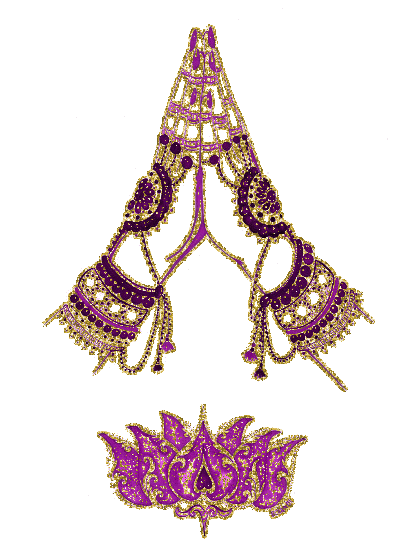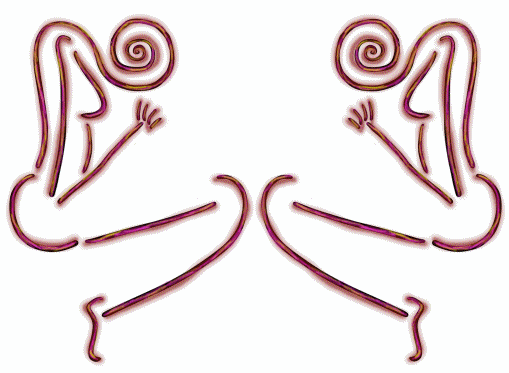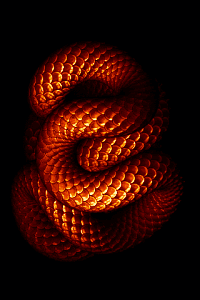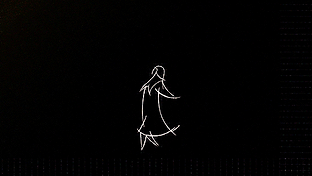
ancient wisdom, restorative yoga, sensual movement, sound healing, meditation and sacred rituals for the awakening and nourishment of the
Divine Feminine and Shaman-SheMan Within
for modern day healers, shamans, peace-makers, mystics, messengers, midwives, mothers, priestesses, artists, bridge-builders, and dream-weavers
(Gender and orientation diversity are welcomed!)

-
Connection Coach and Facilitator for Embodied, Empowered Communication Skills
-
Speaker, Communication Trauma-Dharma Somatic Healing
-
A Guide for Women's Embodied Spirituality, Sacred Sexuality and Dance
-
Mistress of Ceremonies: Marriages, Family & Pet Memorials , Rites of Passages
-
Creator of Shimmy SheMan Circles for Wo:Men and www.klaudeen.com
Thesis excerpt from, "Sacred Belly Dance Uncoiled and Decoded: Reclaiming the Ancient Dance of the Divine Mother and Women's Spirituality," by Klaudeen Shemirani
Several authors traced the origins of belly dance back to prehistoric matriarchal societies (Al- Rawi, 2003; Buonaventura, 1994; Dinicu, 1964; Paul, 2006; Stewart 2000; Tedlock, 2005;) “when women were celebrated as archetypes of the Great Mother, when dance was a central part of all ritual and celebration. Dance was more than simply movement; it was a pathway to connect with the divine” (Paul, 2006, p. 11).
Professional belly dance teacher and trainer in Sydney Australia and creator of Belly Dancing from the Heart Method training, Shemiran Ibrahim (n.d.), described belly dancing in a way that very much reflects many of my experiences and interpretations of the dance:
Within its ancient movements and practices, Belly Dance offers us portals into the [Divine] Feminine on many levels. It can be a window into the mystery and luscious beauty of truth, love and wisdom. In one moment, a dancer who is dancing with intention can transport herself and the viewer to a deep ocean of feeling, a moment of forgetting oneself. Through her dancing, she can help us spend time out of our minds and experience just being. (para. 1-2)
Author, scholar of sacred sexuality, and social anthropologist, Shakti Malan (2012), said that “the women who served as priestesses in the temple of the Goddess had a sacred, sexual function. . . . There was no split between the sacred and the sexual in society’s understanding” (p. 27).
As a result, what made the sex of a woman—her breasts, buttocks, belly, vulva and blood—were deified and worshipped as the Goddess, as what Marija Gimbutas--most significant archeologists of the 20th century--called “a macrocosmic extension of a woman’s body” (1989, p. xxii). Her body—her sex—was sacred and worthy of worship, and she had direct access to the divine because she was woman.
Many people do not connect sexuality with healing abilities such as shamanism, but the two are deeply synergistic—just as sacred movement, or ancient belly dance, is connected to healing, especially when the dancer shimmies and ripples with the healing energy of her aliveness, joy, and ecstasy.
According to Tedlock (2005), author of The Woman in a Shaman’s Body: Reclaiming the Feminine in Religion and Medicine, “Scientists point to a strong neurological connection between sexuality, particularly female sexuality, and going into trance,” in order to explain why “some women feel orgasms so intensely that they enter an altered state of consciousness," and how this ability is what gives women “extraordinary skills in shamanic practice” (pp. 89-90).
Noble (1991) explained that a woman practicing the shamanic arts must learn how to manage the presence and arousal of sexual energy, to keep herself grounded, in order to “receive and transmit powers and energies of transformation” (p. 179).
Tedlock (2005) explained that “Those of us who have watched shamans go into a trance or take an ecstatic spiritual journey . . . know how physical and sensual the experience really is” (p. 79) and that “sexually ecstatic states are celebrated literally as well as symbolically in Tantric and kundalini yoga, both of which evolved out of North Asian shamanic practices” (p. 88).
Tedlock explained that, during a shaman’s healing trance, women shamans can take the sickness of the ill into themselves and “then forcibly expel it by shaking their hands and body” (p. 84). As was mentioned earlier, this trembling motion of the shaking-off is parallel to the shimmies of a belly dancer. Tedlock (1995) cited a medicine woman who explained the trembling as follows:
We believe that tiny lightning can enter your body and cause you to move. When medicine people feel the lightening, they’ll get a chill or a body twitch. This is how lightning works in our healing. When lightening moves inside your body, that’s the Thunder way with the Wind. This is behind the twitching of a holy person [shamanic healer] (p. 84).
References
1) Ibrahim, Shemirani. (n.d). How belly dance empowers your feminine spirit: Practical tips to help you balance out your relationship to gender. Retrieved from http://www. shemiranibrahim.com/how-belly-dance-empowers-your-/
2) Gimbutas, Marija. (1989). The language of the Goddess. New York, NY: Harper.
3) Malan, Shakti. (2012). Sexual awakening for women. A tantric workbook. Sun Valley Cape Town, South Africa: SHAKTI.
4) Noble, Vicki. (1991). Shakti woman: Feeling our fire, healing our world: The new female shamanism. New York, NY: HarperSanFrancisco.
5) Strova, Maria. (2005). The secret language of belly dance: Symbols, sensuality, maternity, forgotten roots. Censena, Italy: Macro Edizioni.
6) Tedlock, Barbara. (2005). The woman in a shaman’s body: Reclaiming the feminine religion and
medicine. New York, NY: Bantam Books.

S H I M M Y S H A M A N
A C A D E M I C R E S E A R C H








